Few jobs in history were more dangerous and harrowing than being a submarine crewman for the German Kriegsmarine during World War II. Three out of every four men who signed up for U-boat duty never survived the war, but their effect both psychologically and logistically on Allied shipping and the war effort in general was undeniable. Winston Churchill himself claimed that the only thing that truly frightened him during the entire conflict was, as he put it, "the U-boat peril." Many simulations have been created that let you command a sub in the Battle of the Atlantic, but Silent Hunter III sets a new standard both for this particular type of sim and for the genre as a whole. It hearkens back to the days of Aces of the Pacific, Red Storm Rising, and Red Baron II, where the focus was on simulating what it was like to be a pilot or nuclear sub captain instead of on meticulously re-creating every piece of hardware down to the last rivet at the expense of overall gameplay. That's not to say that Silent Hunter III skimps on the hardware modeling--the attention to detail is fantastic--but it lets you concentrate on the exciting parts of being a sub captain instead of saddling you with loads of tedious duties in the name of "realism."
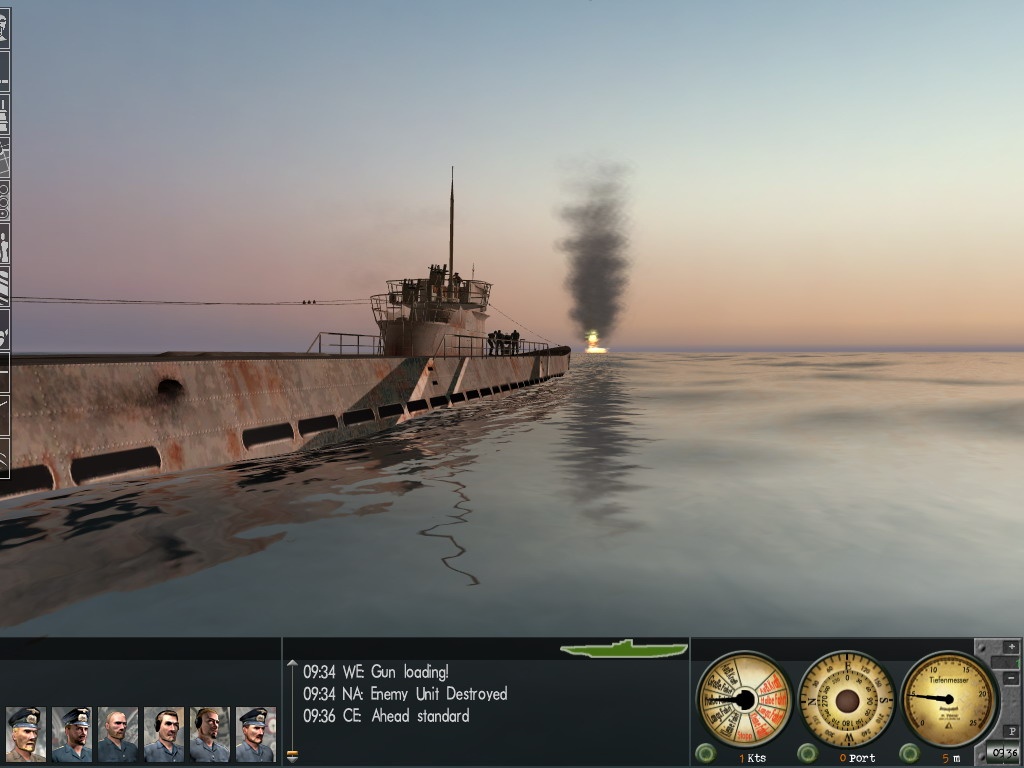
Up to eight players can play out missions cooperatively in multiplayer mode, which we'll talk about later, but the real meat of the game is in the single-player missions and dynamic campaign. From the very first tutorial mission, which involves navigating the sub into open waters, you know your work is cut out for you. Most of the U-boats in the game are slow, unwieldy, and undergunned compared to the surface ships that hunt them, and it's immediately understood that you sit uncomfortably in the middle of the food chain. At the top are the destroyers, aircraft, and other fast and powerful predators that are out to kill you, and at the bottom are the fat, slow transports laden with troops and cargo that you can send to the bottom of the ocean on a whim.
Only a few single missions are included, based on both historical and hypothetical battles, but a complete mission editor is provided for creating nearly any scenario you like. Those elements would almost be enough in themselves to make for a great game, but the dynamic campaign really lets this game shine. There are some serious quirks, like the fact that loading a save game erases every save game you created after that within the same campaign, but when the gameplay is this good it's possible to forgive faults like these.
The campaign lets you select from various time periods, ranging from the earliest forays in 1939 to the bitter end in 1944. U-boats that are available depend on the time period and the fleet you choose, and there are some huge tradeoffs here. Early on, the Type II U-boats are little more than rickety tubs that carry only a few torpedoes, but their job is eased by Allied forces that aren't quite prepared to deal with the threat. Finding large convoys during the early years is very rare, and many merchant ships travel without escorts and are therefore easy pickings. Destroyers and aircraft early in the war are poorly equipped, relatively untrained, and not all that aggressive, which also helps even the odds.
In the middle years of the war, the subs improve with Type VII and Type IX models, but escort ships abound and they are much better at their jobs. By 1943 your job becomes nearly impossible, as escorts and aircraft have the equipment they need to find you, the weapons they need to kill you, and the will to hunt you down mercilessly.
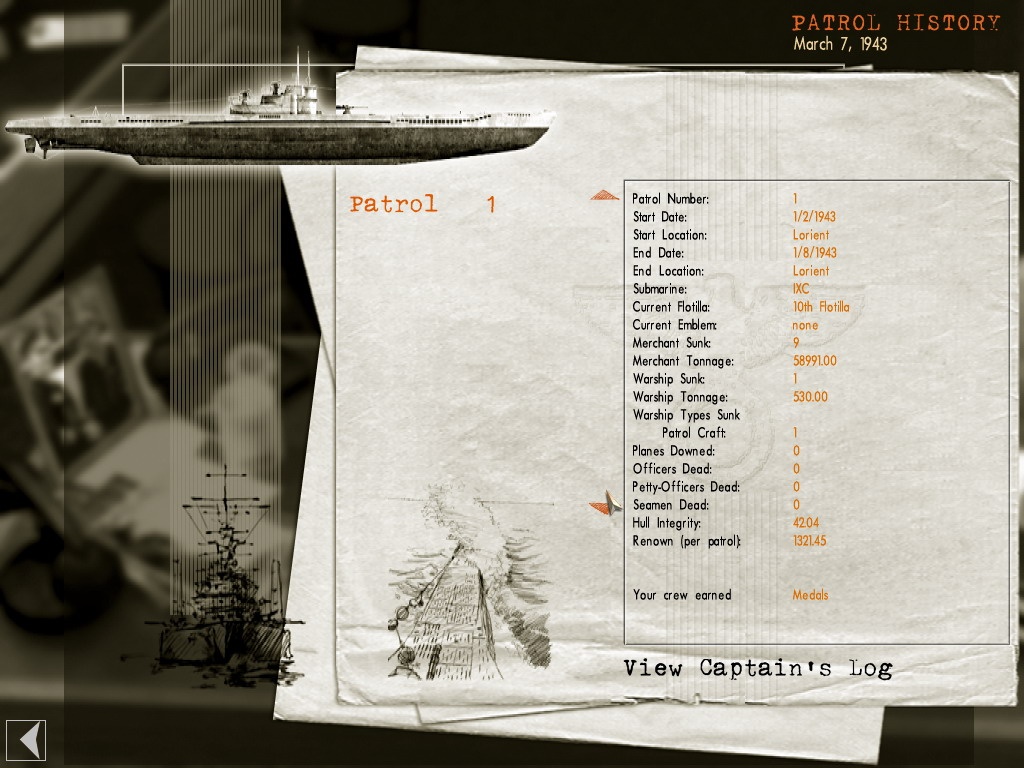
Once you've accepted command of a sub, you can modify it based on how much renown you've accumulated in the training missions and also in previous patrols. You gain renown from sinking ships, and then you can spend it on sub upgrades like sonar, engine superchargers, and improved torpedoes. Available upgrades vary from sub to sub, and as newer U-boats become available you can cash in large amounts of renown to trade up. It's a simple system that adds a lot of flavor to the game and really helps you get attached to your sub.
The first sign that this game is truly special comes when you board the sub for your first patrol. You start docked at a home port, and if you climb out of the command room onto the bridge, you can see people lining the docks to see you off. There are women throwing flowers, other sailors chatting it up, and usually even a band belting out the German national anthem as you head out to sea. Ports are modeled like their real-life counterparts, so while it's possible to head straight out from a place like St. Nazaire (site of the famous 1942 British commando raid), navigating into open waters from a place like Lorient requires a lot of tricky maneuvering.
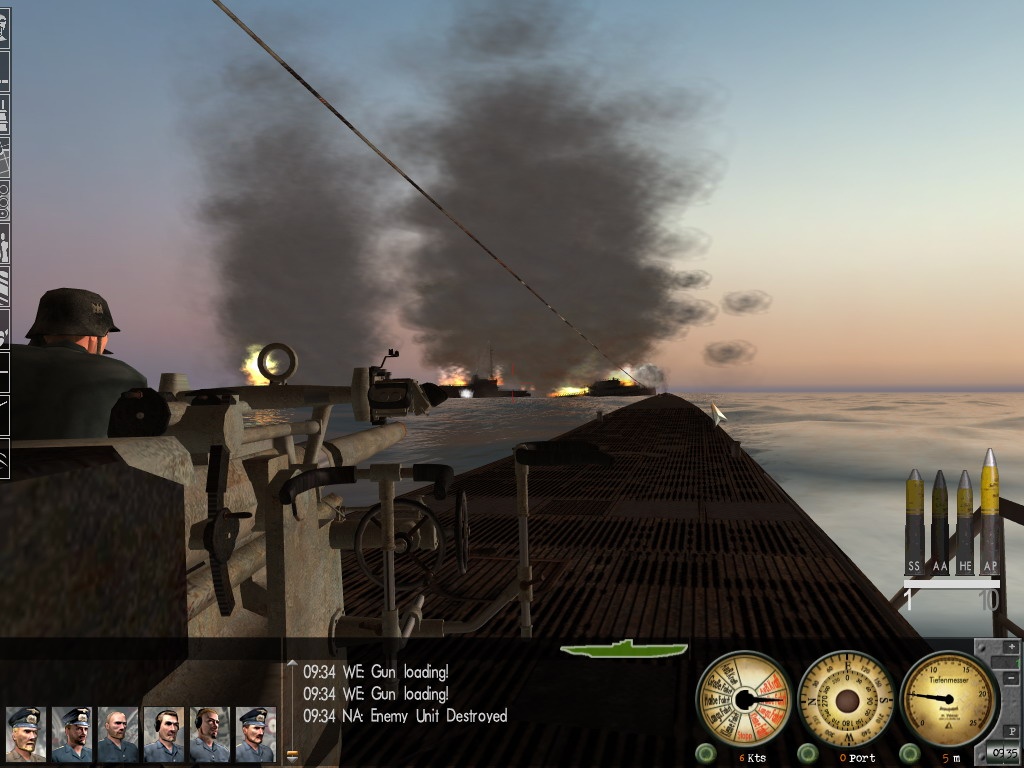
Once you hit the Atlantic you are free to plot any course you like to get to your assigned patrol sector, where you generally must remain on station for 24 hours to complete the patrol. The sea is alive with ships that follow dynamically assigned routes, making it possible to track convoys and task forces over long distances to get into optimal attack position. Ships tend to follow historic convoy routes, which are printed on the included paper map, making it easier to position your sub along one of these target-rich (but well-protected) corridors. For a real challenge you can try running through the Strait of Gibraltar, or stalk the coasts of England and Ireland.
Contacts are marked on the map and fade over time if they are not stalked. It also is possible to radio the position of contacts and convoys back to headquarters, and occasionally planes or another sub may be dispatched to deal with it. Unfortunately, wolf packs are not implemented in single-player, making it impossible to team up against a large convoy.
After maneuvering the sub into kill position, one of the game's best elements--plotting firing solutions--comes into play. It is possible to let the computer handle targeting for you, or at least to identify ships, but hardcore players will want to handle everything manually. This is done by identifying targets through the periscope or binoculars using the onscreen ship ID database, which isn't always easy since many attacks are done at night. Once the ship is identified, you send the data to the targeting computer and then measure its range by using the scope to place a line at the top of the ship's mast and another line on the horizon (not easy in choppy seas). Other tools are used to figure out the target's speed and other information, and all of the data you collect is sent to a targeting computer that calculates how much lead the torpedoes must use to hit the target, assuming the victim doesn't change speed or direction while the torpedo is on its way. Getting in close undetected so that torpedo travel time is reduced is vital for success.
Lining up shots manually requires doing some math and making several educated guesses, but the first time you get everything right and slam a torpedo directly into the spot on the ship you wanted to target, the process becomes downright addictive. With so much relying on your own personal skill, it's impossible to not become personally invested in each and every shot, and we found ourselves practically cheering after every direct hit and practically screaming with frustration after every miss or dud. Even if you go the all-automatic route, getting set up so the torpedo is launched in optimal conditions is a rewarding challenge, as is determining what type of torpedo to fire (several models are available, with different strengths and weaknesses) and what settings you want the torpedo to use. It is also possible to use detonators on most torpedoes that sense a target's magnetic field and explode underneath them, using the ship's own mass to ensure its quick demise. These types of shots are devastating when they go off properly, letting you break the back of all but the largest targets with only one or two torpedoes, which is very important in a game where weapon conservation is so vital.
Most of the subs modeled in the game have deck guns for shooting up ships and flak guns for taking care of pesky aircraft, and you can either leave these duties up to your crew or strap in and manually fire away. Fighting on the surface is suicide if there are destroyers or other warships around, as they will quickly pummel you with their bigger guns and crush your hull with depth charges and other weapons. Destroyers are practically suicidal, and several of our patrols have ended with a maniacal destroyer captain smashing into the side of our U-boat at 30-plus knots. This makes fighting large convoys tricky, as you have to decide whether or not to take the escorts out first, which requires using up torpedoes that are invaluable when destroying high-tonnage ships like tankers, troop transports, and passenger liners. Deck-gun attacks are an option in the early part of the war, before the Allies get their act together, but by the time the advanced Type XXI sub is available in 1944, it doesn't even have a deck gun, because fighting on the surface is futile.
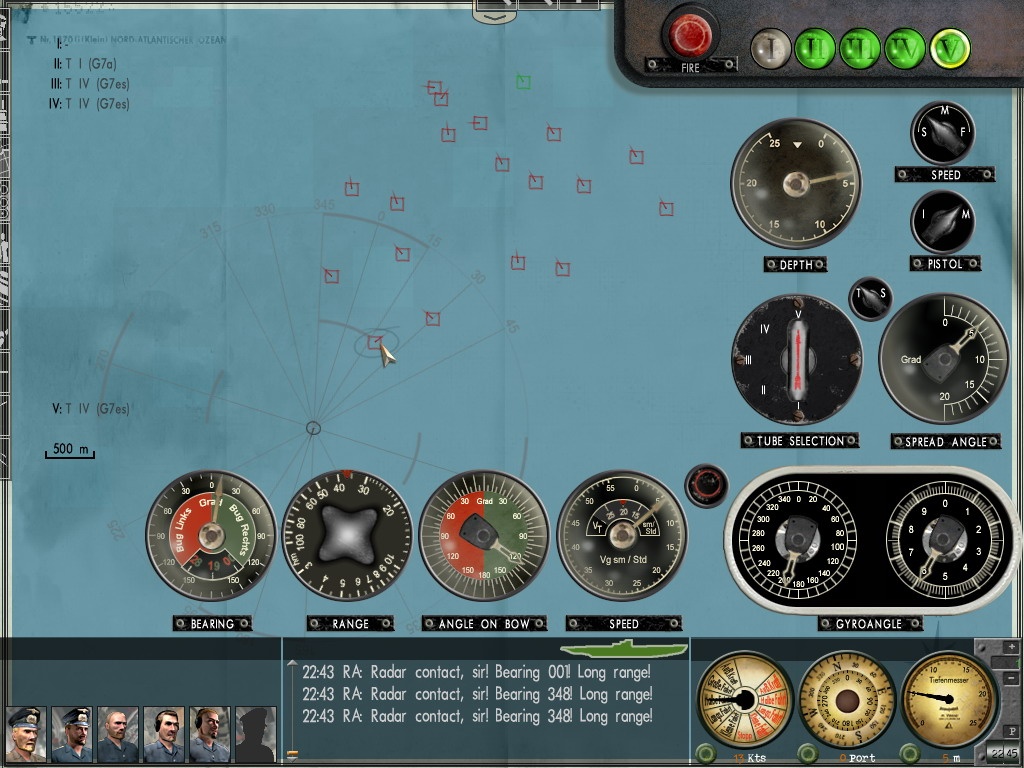
Although there are no holes or other visible evidence that your torpedoes or guns have ripped through an enemy's hull, the damage model is otherwise spectacular. It is possible to target vulnerable portions of the various ships, like ammo magazines and fuel tanks, assuming you know where these soft spots are and are good enough at coming up with firing solutions to hit them. Ships sink based on where they take damage, and the number of ways we've seen targets slip beneath the waves is staggering. Some sink inch by inch as they slowly flood. Others snap violently in half, with each section bobbing straight up briefly before plunging straight back down. We hit a carrier and watched it list badly to starboard, with the right side of the flight deck nearly touching the water. After achieving a direct hit on the engines of a destroyer, we watched it lazily drift away for a few minutes before the back end of the ship flooded, lifting the entire front end of the victim out of the water as the ship sank from stern to bow. Often, especially after deck-gun attacks, ships burst into flames and explode violently, scattering everything from masts to cargo every which way. Morbid as it sounds, after spending vast amounts of time getting into position undetected and working up the firing solution that strikes a killer blow, it is extremely satisfying to watch your prey stumble through its unique dance of death.
Online play is a blast, but only if you group up with people you know. We played a few pickup games with strangers that were disastrous wastes of time because we weren't able to work out clear goals and work with each other to achieve them. Up to eight people can play at once over a LAN or via the Ubi.com matchmaking service (which is integrated directly into the game), but at the time of this writing there was a strange bug that required players to Alt-Tab out of the game and then back in quickly while joining a session or the "Ready" button would be disabled (preventing the game from starting). If you are playing with a group of friends who know about this weird work-around, it isn't a problem, but games with strangers can take forever to get started as scores of clueless people keep joining and leaving.

The game runs at a fixed resolution of 1024x768, but don't let those relatively low numbers fool you. Even on our 21-inch CRT test monitor the 3D graphics were smooth and very detailed, especially with antialiasing enabled. The 2D navigation and torpedo solution maps are very clear, and map overlays are rendered so they look hand-drawn, which is a nice touch. The game is full of elements like this that serve to draw you further into the environment, including pipes and valves that burst and spray water everywhere when the ship takes damage, lights that flicker when the ship is rocked by depth charges, and blinding glare from flares and destroyer spotlights. It's possible to watch the action unfold using an external camera that flies around the ocean, and when torpedoes are about to reach their target destination, a small window pops up that can be clicked to give you a full-screen view of the ensuing carnage (or of the heartbreaking miss).
Good as the ship graphics, maps, and lighting are, nothing compares to the fantastic water special effects. Waves look very convincing, ranging from glassy ripples to frothy monsters that are tall enough to swallow the conning tower. It is impossible to man the deck guns or flak guns in choppy seas, which poses tactical problems in the early years of the campaign when deck-gun attacks are feasible, but big waves also work in your favor by helping to hide the sub's periscope. Water realistically interacts with the periscope, turning viewfinder images into shimmering watercolors whenever waves lap across the lens, and it never fails to thrill when the lens clears and the blurry mirage you were looking at resolves into a menacing warship or a juicy target.
The sound also deserves special mention for being so well done. Explosions, gunshots, and special effects, like the sound of shells hitting the water and sonar pings, provide everything you'd expect from a riveting war movie. The crew chimes in when contacts are spotted, damage is taken, or other vital information is available, and in a nice touch they all speak in whispers when the ship is rigged for silent running. The orchestral score that plays and changes dynamically during the action is done very well, but perhaps the best feature is the gramophone. By placing MP3 tracks in the game's gramophone directory, you can order your radio officer to play the music over the sub's PA system, and putting in tunes that were popular during the war really helps set the mood. Unfortunately, none are included with the game for licensing reasons. The mod community has also begun digging into the simulation's many configuration options, most of which are stored in simple text files that make them very easy to edit if you ever read about a change you'd like to make.
One example is crew fatigue, which is one of the low points of the simulation. It's great that fatigue is modeled, and crew members are marked with exclamation marks to let you know they need to get some rest, but rotating them in and out of the bunks requires more micromanagement than any real sub commander ever would have had to deal with. A few simple changes to the text files can let you eliminate fatigue entirely, or at least modify it until a patch addresses the problem. There are hundreds of tweaks like this that let expert players tailor the sim to their play style.
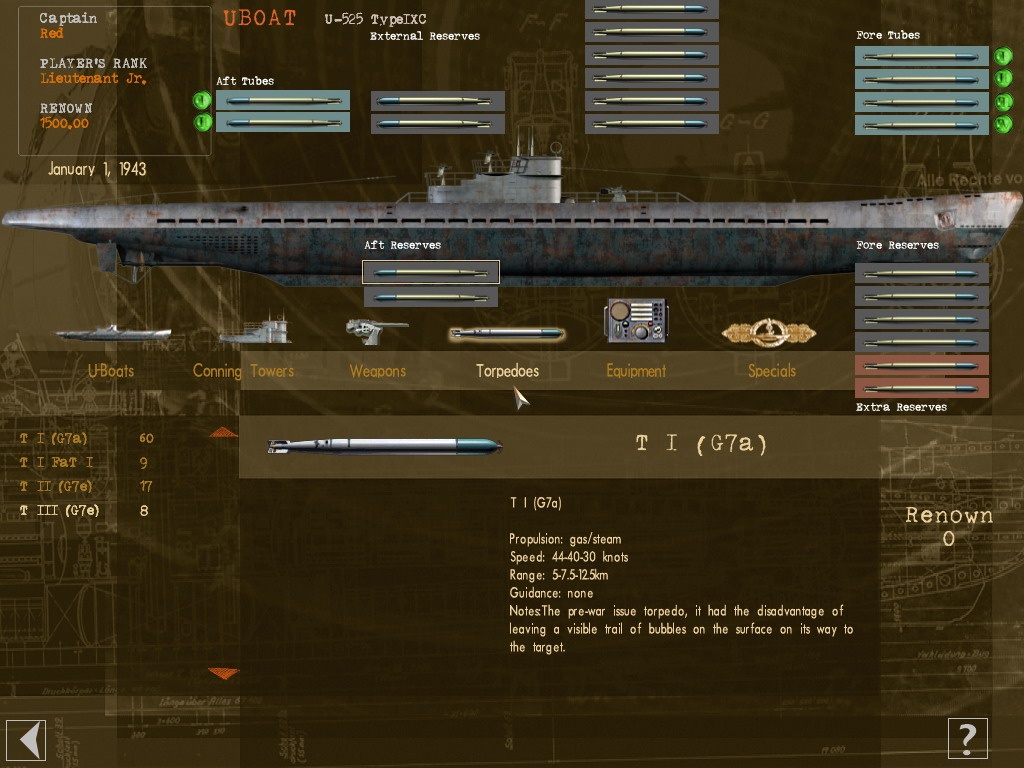
Silent Hunter III shipped with some bugs, including severe graphics problems with certain Nvidia and ATI cards, which were almost immediately addressed in a patch that was used during the preparation of this review. There are still a few kinks to work out--we've loaded saved games where every ship in the ocean was frozen in place, forcing us to end a patrol early, for example. There also are a few annoyances like poor crew management tools and the fact that there is no easy way to change key bindings, which is a major problem since the default key for launching torpedoes is right next to the default key for centering the rudder. None of these issues change the fact that this is an outstanding WWII submarine simulation in every regard. It provides enough challenges and rewards to appeal to nearly any simulation fan, and it does an excellent job of balancing simulation detail with visceral, seat-of-your-pants gameplay. It lets you feel like you are a submarine captain in charge of a powerful but fragile U-boat, it provides a sobering history lesson, and the campaign makes you feel like you are a small but important part of a much larger conflict. Those are the hallmarks of a truly great simulation.